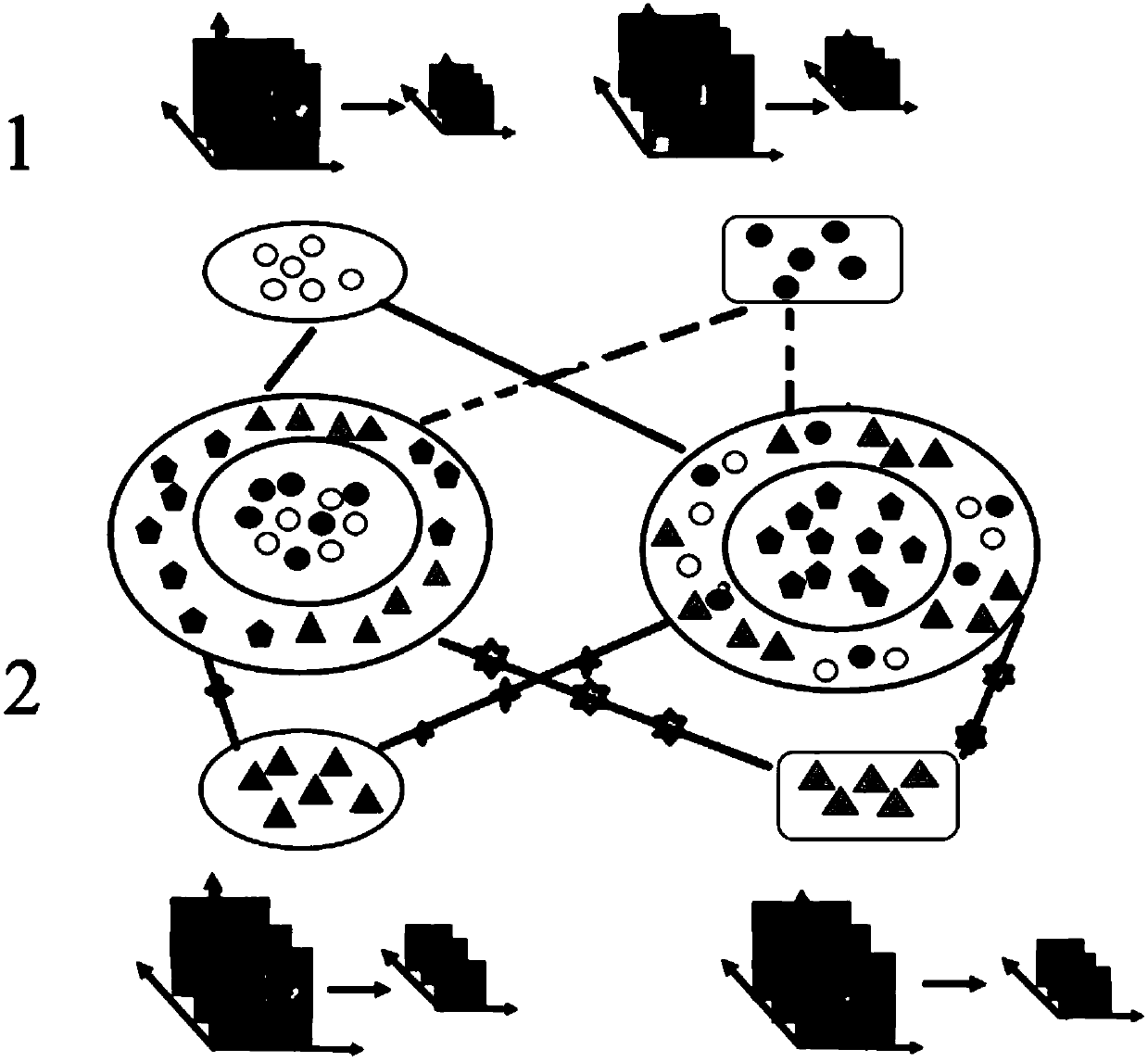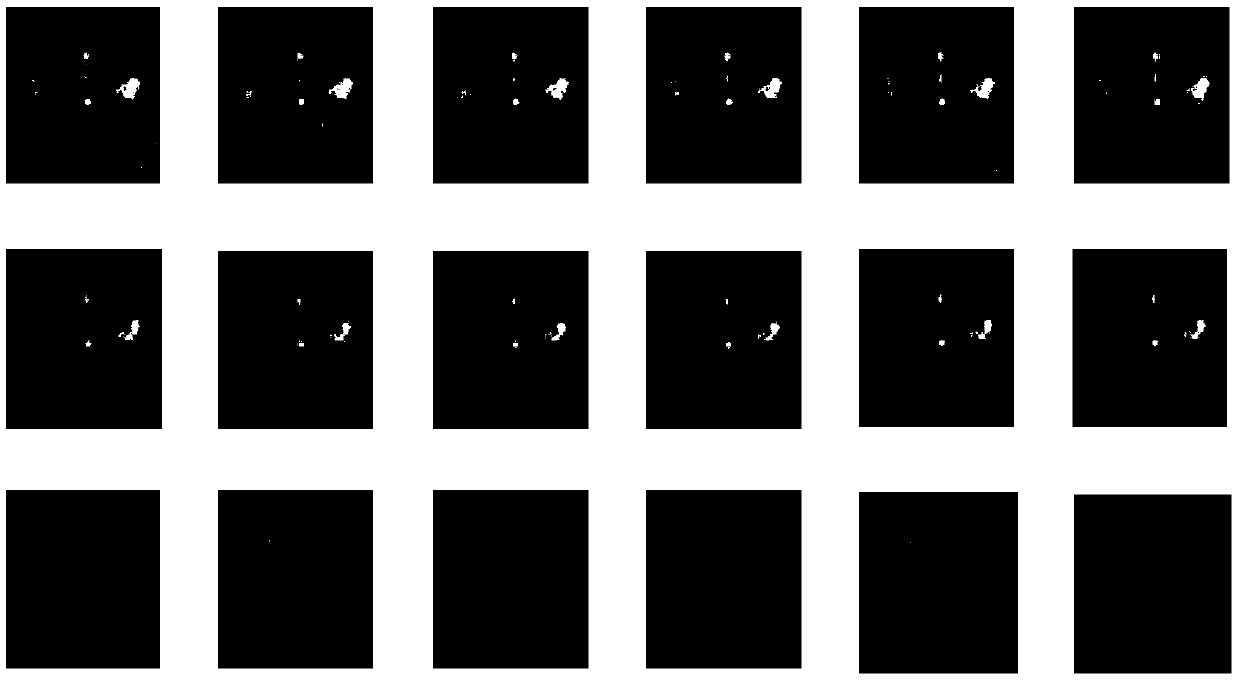A micro-expression recognition method based on macro-expression knowledge transfer
A recognition method and micro-expression technology, applied in the field of pattern recognition and machine learning, can solve problems such as difficulty in model training, low micro-expression recognition rate, and insufficient micro-expression samples
- Summary
- Abstract
- Description
- Claims
- Application Information
AI Technical Summary
Problems solved by technology
Method used
Image
Examples
Embodiment 1
[0063] A micro-expression recognition method based on macro-expression knowledge transfer, such as figure 1 shown, including the following steps:
[0064] (1) Divide facial expressions and micro-expressions into blocks: according to the facial motion coding system proposed by Professor Ekman, select 27 pixel points related to facial expression and micro-expression recognition, and take these 27 pixel points as the center Take the block and get 27 blocks. Using multi-task learning, these blocks are respectively subjected to subsequent model training, thereby reducing the interference of other information on the face to the training. Figure 4 (a) is a schematic diagram of macro-expression in 27 points related to macro-expression and micro-expression recognition; Figure 4 (b) is a schematic diagram of micro-expression in 27 points related to macro-expression and micro-expression recognition;
[0065] (2) Perform feature extraction on expressions and micro-expressions, extract L...
Embodiment 2
[0141] According to a kind of micro-expression recognition method based on macro-expression knowledge migration described in embodiment 1, its difference is:
[0142] Given a gallery sample set X, block the samples;
[0143] Extract sample features to get Indicates the t-th block of the j-th sample of the i-th class in the X sample set;
[0144] The obtained projection T represents the total number of blocks, according to the category of the sample and the number of blocks multiplied by the corresponding projection matrix, to obtain the characteristics in the public space, that is
[0145] For any probe sample y, still extract features according to the above method, get {y t |t=1,...,T}, since the category of this sample is unknown, one problem we face is how to choose the projection matrix pass After projection, c common subspaces are obtained. These c common subspaces are parallel, but because the approach and distance criteria of the samples are different, so we ...
PUM
| Property | Measurement | Unit |
|---|---|---|
| Frame rate | aaaaa | aaaaa |
Abstract
Description
Claims
Application Information
 Login to View More
Login to View More - R&D
- Intellectual Property
- Life Sciences
- Materials
- Tech Scout
- Unparalleled Data Quality
- Higher Quality Content
- 60% Fewer Hallucinations
Browse by: Latest US Patents, China's latest patents, Technical Efficacy Thesaurus, Application Domain, Technology Topic, Popular Technical Reports.
© 2025 PatSnap. All rights reserved.Legal|Privacy policy|Modern Slavery Act Transparency Statement|Sitemap|About US| Contact US: help@patsnap.com



